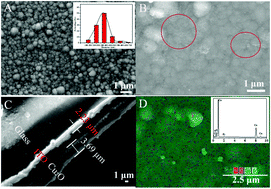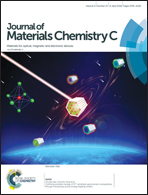A PPy/Cu2O molecularly imprinted composite film-based visible light-responsive photoelectrochemical sensor for microcystin-LR†
Abstract
In this study, a visible light-responsive photoelectrochemical (PEC) sensor based on a PPy/Cu2O molecularly imprinted composite film for microcystin-LR (MC-LR) has been fabricated. Uniform Cu2O nanoparticles were electrodeposited on a pretreated indium-doped tin oxide-coated glass (ITO) by carefully controlling the deposition process and used as a photocatalyst to produce photocurrent under visible light. Subsequently, molecularly imprinted polypyrrole (PPy) was modified on the surface of the Cu2O/ITO electrode by an electropolymerization process, which created a certain amount of special recognition sites to enhance the selectivity of the electrode to MC-LR. PEC molecular imprinting sensors were used to rapidly analyze MC-LR concentration by determining changes in photocurrent density. The results showed that the change of photocurrent density was linearly proportional to the logarithm of the MC-LR concentration over the ranges from 1.0 ng L−1 to 100 ng L−1 and from 100 ng L−1 to 10.0 μg L−1 with a low detection limit of 0.23 ng L−1 (S/N = 3). Moreover, the PEC sensors exhibited specific selectivity to MC-LR when exposed to certain concentrations of interfering solutions. The constructed PEC sensors demonstrated good applicability in local water systems; this suggested that this promising application of integrating PEC and molecular imprinting technology could be applied to detect other contaminants of emerging concern.



 Please wait while we load your content...
Please wait while we load your content...